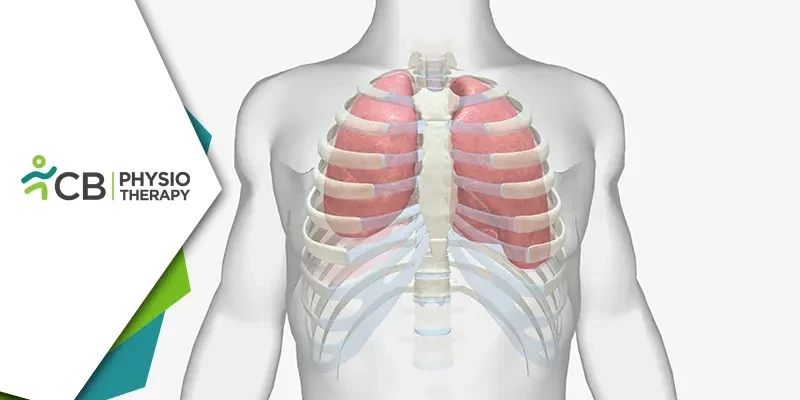Costochondritis is a condition that affects millions of people around the world. It is characterized by inflammation of the cartilage that connects the ribs to the breastbone (sternum). This inflammation can lead to chest pain and discomfort, and difficulty in breathing, often mimicking the symptoms of a heart attack. While it can be a distressing condition, the good news is that physiotherapy plays a crucial role in the management and recovery of individuals suffering from costochondritis. In this blog post, we will explore what costochondritis is, its causes and symptoms, and how physiotherapy can provide relief and improve the quality of life for those dealing with this condition.
Understanding Costochondritis
Costochondritis, often referred to as chest wall pain or costosternal syndrome, is an inflammatory condition that primarily affects the cartilage that connects the ribs to the sternum. This cartilage is essential for the flexibility and movement of the ribcage during breathing. When it becomes inflamed, it can lead to localized chest pain, which can range from mild to severe. The exact cause of costochondritis is not always clear, but it is often associated with the following factors, injury to the chest area, such as a direct blow or trauma from a car accident, can trigger inflammation in the costal cartilage, overuse or repetitive movements of the chest and upper body, especially in athletes or individuals who engage in strenuous physical activities, can contribute to the development of costochondritis, viral or bacterial respiratory infections, such as bronchitis or pneumonia, can lead to inflammation in the chest area, excessive strain on the chest muscles or ligaments, often due to heavy lifting or intense physical activities, can exacerbate the condition.The primary symptom of costochondritis is chest pain. This pain is typically sharp and may be exacerbated by activities that involve chest movement, such as deep breathing, coughing, sneezing, or lifting heavy objects. The pain can also radiate to the back or the abdomen, leading to concerns about more severe medical conditions like heart problems or gastrointestinal issues. This is why costochondritis can often be mistaken for more serious conditions, making an accurate diagnosis crucial.
Role of Physiotherapy in Managing Costochondritis
Physiotherapy is a non-invasive and effective approach for managing costochondritis. It plays a significant role in alleviating pain, improving chest mobility, and enhancing overall quality of life for individuals with this condition. Here are some key ways in which physiotherapy can help:1: Pain Management: Physiotherapists can use various techniques to reduce pain associated with costochondritis. These may include thermotherapy or cryotherapy, soft tissue manipulation, and gentle exercises aimed at reducing muscle tension and improving blood circulation to the affected area.
2: Breathing Exercises: Since costochondritis can make deep breathing painful, physiotherapists can teach patients specific breathing techniques to minimize discomfort and improve lung capacity. These exercises can also help prevent complications like pneumonia, which can result from shallow breathing.
3: Posture Correction: Poor posture can exacerbate chest pain in individuals with costochondritis. Physiotherapists can assess and correct posture issues, ensuring that the chest is properly aligned and not under unnecessary strain.
4: Stretching and Strengthening: Targeted stretching and strengthening exercises can help improve the flexibility and stability of the chest and upper body. By gradually increasing strength and flexibility in the affected area, patients can reduce the risk of recurrent inflammation.
5: Education and Lifestyle Modifications: Physiotherapists educate patients about their condition and provide guidance on lifestyle modifications. This includes advice on avoiding activities that trigger symptoms and promoting habits that support healing and recovery.
6: Pain Relief Modalities: Physiotherapists may use modalities such as Ultrasound Therapy or Electrical stimulation (TENS) to relieve pain and promote healing in the chest area.
7: Gradual Return to Activity: For individuals who lead active lives or participate in sports, physiotherapy can help them safely return to their regular activities by providing tailored exercise programs and guidance on the gradual reintroduction of physical activities.
8: Patient Empowerment: Beyond physical treatment, physiotherapists empower patients to take control of their condition by teaching self-management techniques, including pain-relief strategies and exercises that can be done at home.
Costochondritis is a painful and often misunderstood condition that can significantly impact a person's quality of life. Physiotherapy offers a holistic and effective approach to managing costochondritis by addressing pain, improving mobility, and empowering patients with self-management strategies. If you or someone you know is dealing with costochondritis, seeking the guidance of a qualified physiotherapist can be a crucial step towards relief and recovery. With the right treatment plan and commitment to self-care, individuals with costochondritis can regain control over their lives and enjoy a pain-free future.

